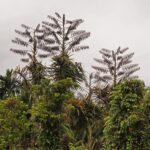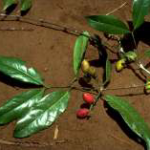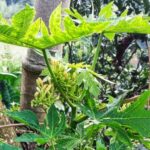Some times ferns are eaten in large quantities. At highland pig kills, ferns are one of the most common edible greens. Some ferns are only eaten with meat. Some other ferns are eaten more regularly and are very much liked.
Ferns used as edible greens in Papua New Guinea
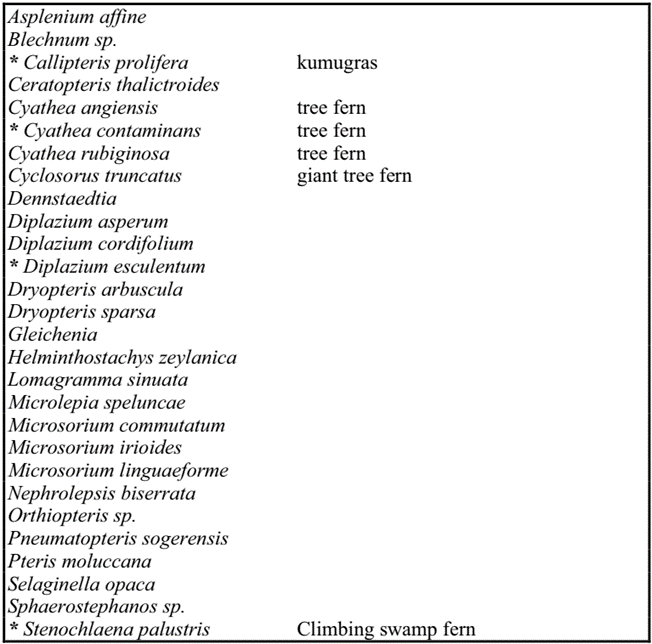
The ferns marked with an asterix * are probably the ones most commonly used. Other ferns as well are used. Most of these ferns are not planted but are left when clearing land and are maintained and sometimes transplanted. Normally they are eaten with meat. In some areas they are eaten in large quantities when people kill large numbers of pigs.
With ferns it is mostly just the very young tender leaves that are cooked and eaten. So they are harvested just after the fronds have started to uncurl but before they have begun to harden.
Climbing swamp fern (Stenochlaena palustris)
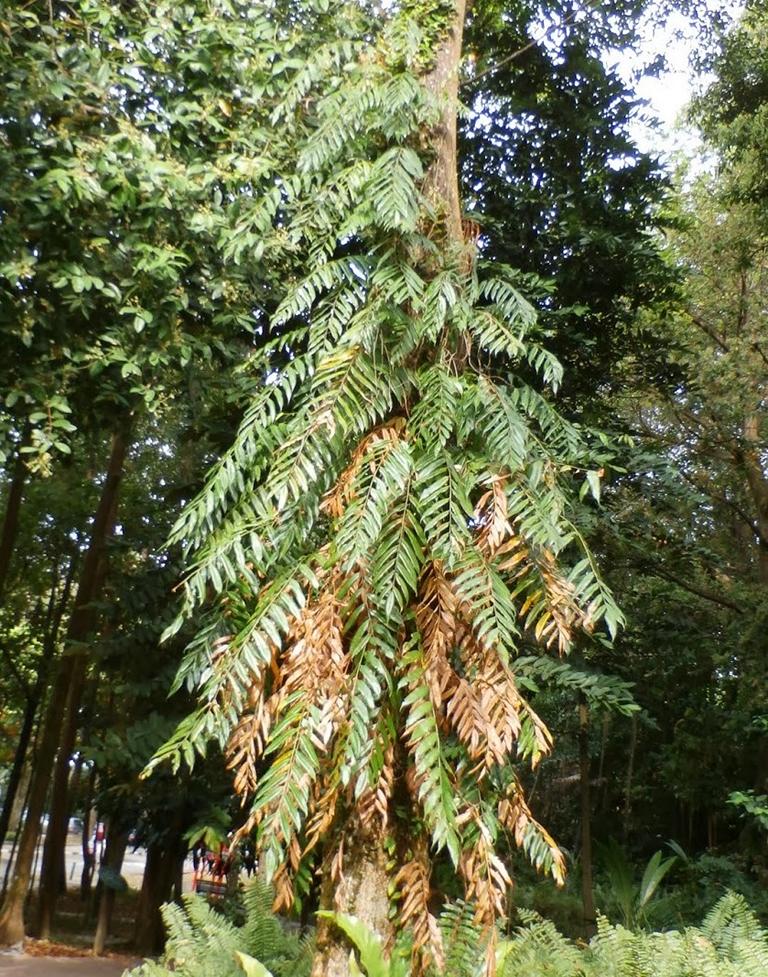
Tok Ples names:
- Foi – tunane sai
- Kaluli – sa
- Podopa – orare
It is a climbing fern with a thin smooth rhizome which climbs up sago palms and tree trunks. The fronds have several leaflets and they are often red in colour. The fertile fronds are thinner than the other fronds and they are produced at the top of the plant.
Where does it grow?
This fern grows in the lower areas of the Highland Provinces and in other coastal areas of Papua New Guinea. It probably grows up to 900 metres altitude above sea level, and also grows in other warm countries. It likes to grow in a warm, waterlogged, partly cleared forest site. Therefore it is suitable and common in sago type places. It cannot stand frost. If you want to it is easy to grow from spores.
How is it used?
The young shiny leaflets are picked and cooked and eaten.
Tree ferns (Cyathea spp.)
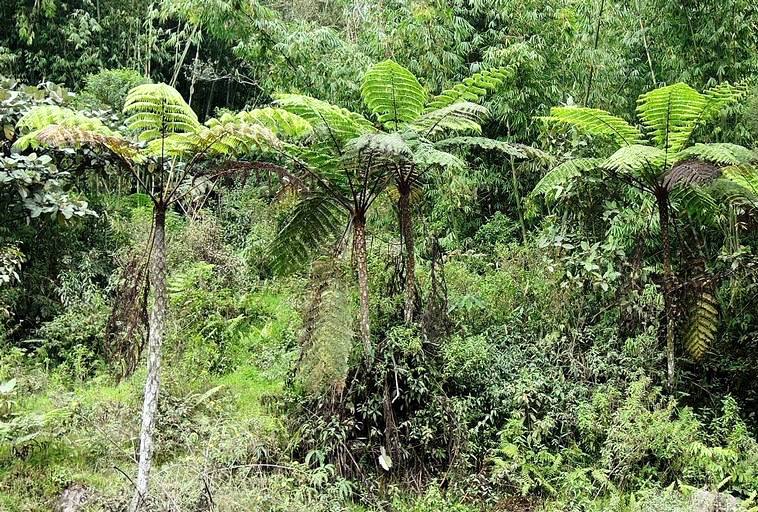
Three different tree ferns have been recorded as being used for edible green fronds in the highland regions. These are:
- Cyathea angiensis tree fern; the fronds occur in a ring of 4 or 5 fronds around the stem and the old fronds fall off immediately. It grows from 600 to 2200 metres altitude.
- Cyathea contaminans tree fern; This is probably the most commonly used one. Grows at 200 to 1600 metres altitude
- Cyathea rubiginosa tree fern; it grows from 110 to 2840 metres altitude
These tree ferns can have a trunk up to 2 or 3 metres tall. The fronds are over a metre long and they have scales on all surfaces.
They can very commonly be seen being eaten at highland pig kills. Normally they are only eaten with meat and as meat is not a common item in the diet people do not eat these fern fronds every day. Only the very young fronds are used.
The ferns grow in high rainfall forest areas but commonly to grow in cleared grassland areas if the roots are into moist soil. They are common in the higher altitude zones. When people are making gardens they carefully leave these ferns to grow. Occasionally people transplant one to a more suitable site or nearer their home.
They can easily be grown from spores on the back of the fronds. And can also be transplanted if some of the roots are left on the trunk and the fronds are trimmed. They require abundant moisture and often grow near streams. They also do best in light shade. These plants are frost tender.
Diplazium ferns
Diplazium asperum
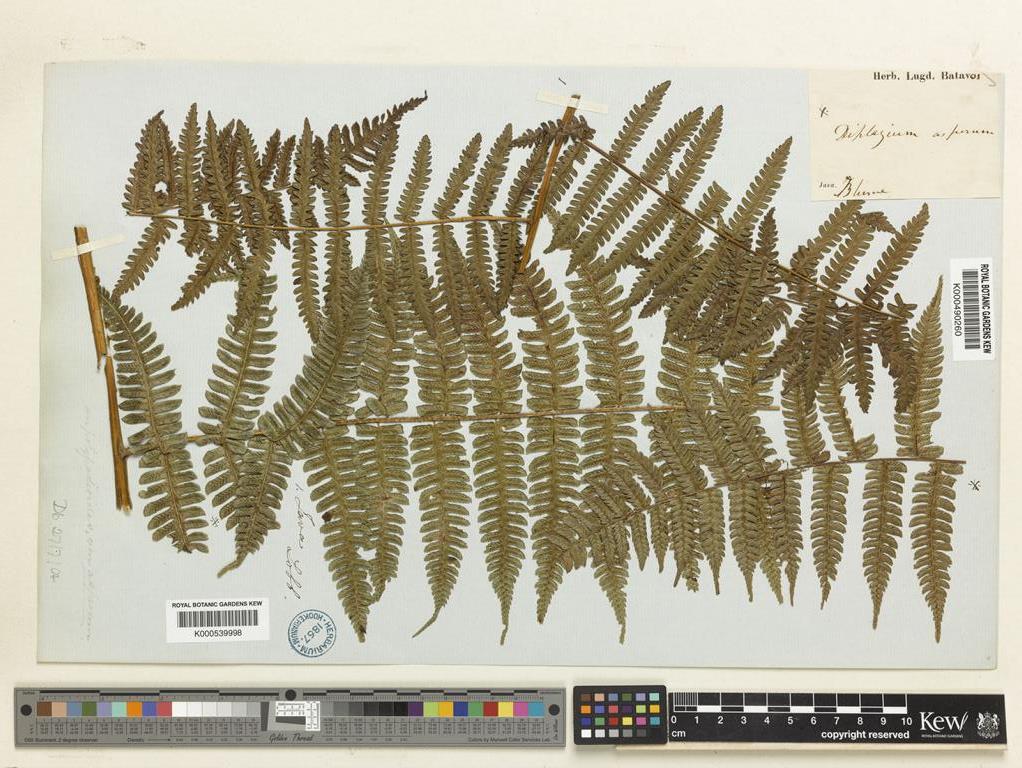
This fern species grows between 250 to 1500 metres altitude. It is a fern that has fronds up to 3 metres high. The stem of the fern is mostly underground and densely covered with roots. The leaf stalk is rough. They grow best in humid moist and lightly shaded places near creeks and on the edge of forests. They normally grow wild. The young, not quite unfolded fronds are eaten cooked.
Diplazium cordifolium
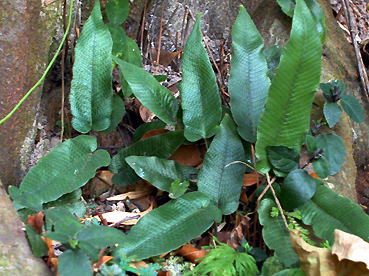
Is a fern with a tufted rhizome and covered with brown or black scales. The fronds are up to 50 cm long and 12 cm wide. They stick straight up. The fronds are not divided. To grow it must have a minimum temperature over 10°C. It likes a moist protected situation.
Diplazium esculentum
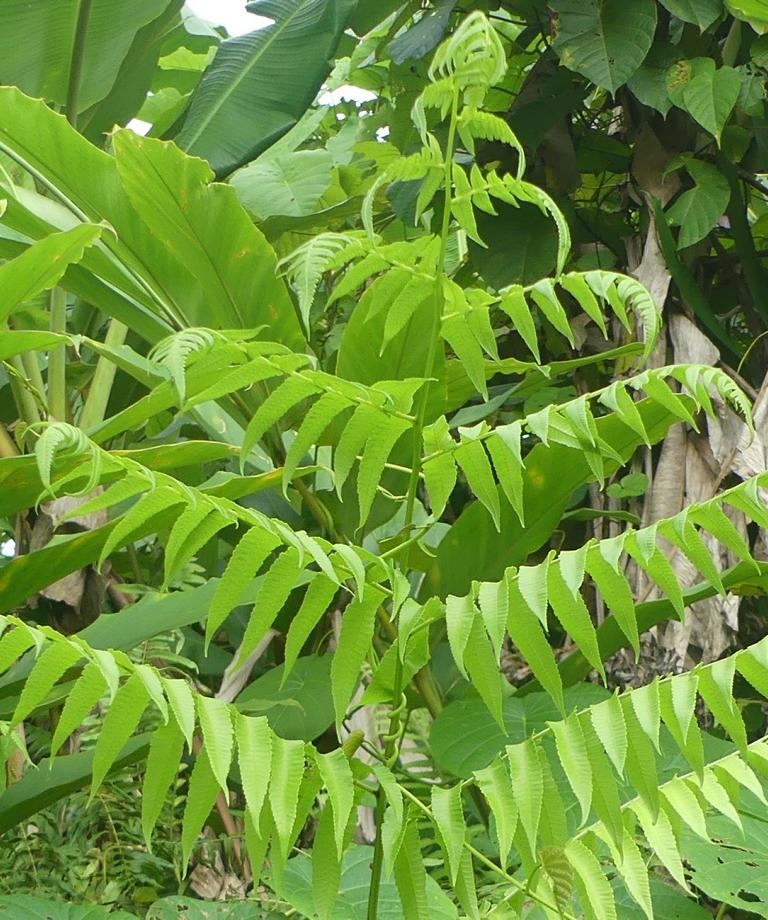
This species is the one of these three ferns that is most commonly recorded eaten. It is a large fern with an upright stem. The leaf stalks are black near the bottom. The end sections of the leaf are divided into many leaflets that are about 8 cm long and 1 cm wide. It is most common in coastal areas and especially in wet areas. It occurs in Malaysia, Indonesia, Philippines and Fiji and is used as a food in these countries. Further information about this fern species can be found at this article on the Bushguide101 website.
.
.
Kumugras (Callipteris prolifera)
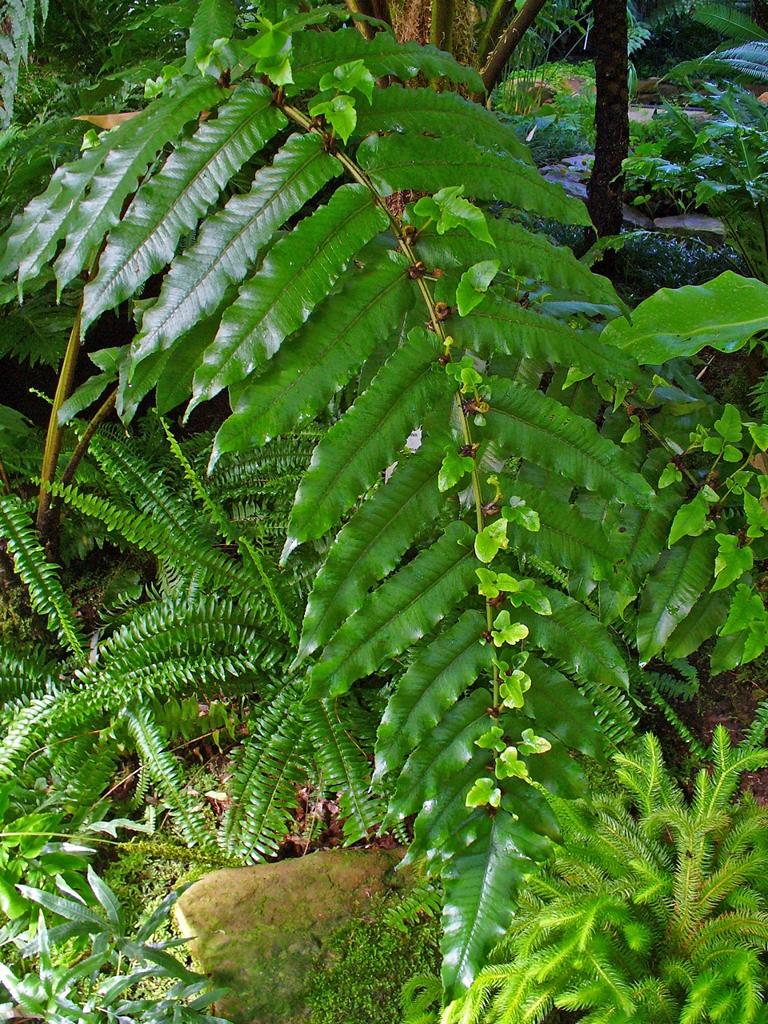
- Tok pisin: Kumugras
- Tok ples Kuanua: Tubua
This is a fern with a tough woody black rhizome and covered with black scales. They have a narrow, black toothed edge. The fronds are erect and up to 2 metres long. They can be 55 cm wide. They are fleshy and pale green. It likes hot humid conditions.
Water fern (Ceratopteris thalictroides)
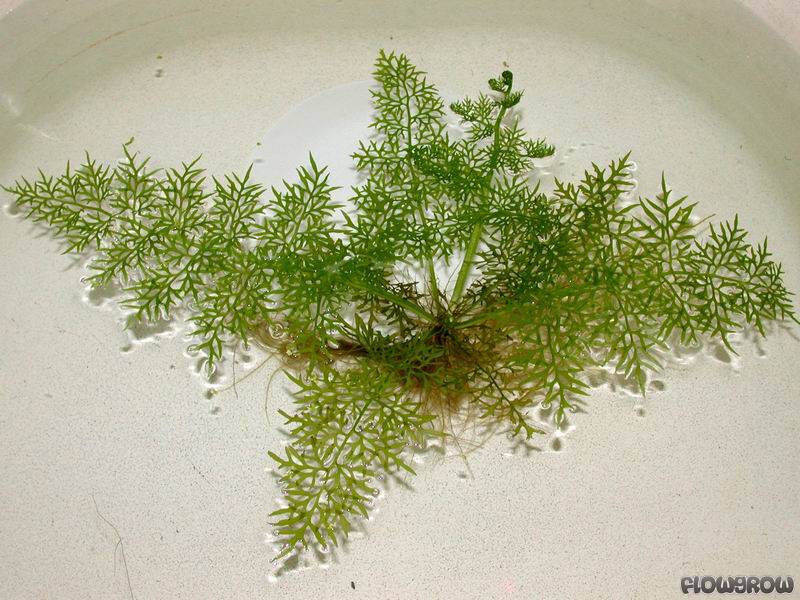
This is a fern that grows in water and can float on water. It can also grow on dry land in humid regions. It grows as tufted clumps. The rhizome is short, upright and fleshy with a few scattered scales. The fronds are up to 20 cm long. They are fragile and spongy and light green. The leaves are like carrot tops. The fertile fronds are taller and narrow with the edges curved back under.
It is common near the coast and up to 1200 metres altitude. It is common in flooded coastal streams and near mangroves in fresh water swamps. In other countries it has often been grown along with rice, in paddies and also in areas with flooded taro. Small pieces of the plant will root in mud. The spores can also grow into new plants. The plant is edible. It can be eaten raw or cooked. It is used for food in many tropical countries.
______________________________________________________________________________________________________________
Text and all photos at this article © Food Plant Solutions. The author’s professional background and contact information can be found here.
.



